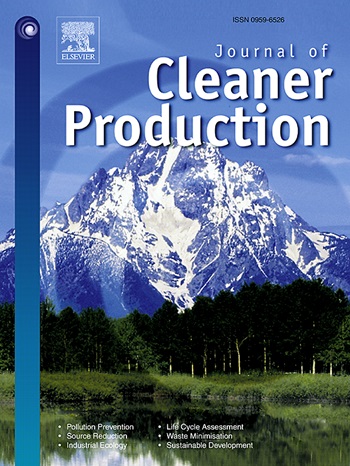Exploring influential factors on biomass and diversity of ancient trees in human-dominated regions: A case study in Guangdong Province, China
IF 9.7
1区 环境科学与生态学
Q1 ENGINEERING, ENVIRONMENTAL
引用次数: 0
Abstract
Ancient trees, which are vital for biodiversity and cultural heritage, maintain species richness, ecosystem resilience, and societal interconnectedness. However, escalating global climate change and human activities have led to widespread declines in ancient tree diversity and habitat degradation. Hence, understanding ancient tree dynamics is vital for precise conservation strategies, fostering harmony between society and ecology. This study addresses the gap in understanding the factors influencing ancient tree biomass and diversity in human-dominated areas. This study first collected biomass equations for ancient tree species. The biomass of ancient trees within human-influenced regions of Guangdong Province was subsequently computed in detail. Finally, by employing a structural equation model, we sought to quantitatively elucidate the influence of natural variables (encompassing geography, topography, soil composition, and climatic conditions) alongside anthropogenic variables (including population density, per capita GDP, the human footprint, ancient villages, and religious sites) on both the biomass and species richness of ancient trees. The species with the highest total biomass included Ficus microcarpa L.f. (2.45 × 105 t), Ficus concinna (Miq.) Miq. (4.07 × 104 t), and Litchi chinensis Sonn. (3.16 × 104 t). Moreover, the biomass presented a pronounced phylogenetic signal and evolutionary conservation. According to the results of the structural equation model, across the entire study area, soil characteristics emerged as the most influential predictor among the natural factors (β = −0.14), whereas population density stood out as the foremost predictor among the anthropogenic factors (β = 0.23). Notably, both climatic conditions and anthropogenic factors contributed positively to an increase in ancient tree biomass (β = 0.02) (β = 0.07), albeit concurrently leading to a decrease in species richness (β = −0.05) (β = −0.08). In regions characterized by high levels of disturbance, anthropogenic factors indirectly increase biomass by increasing the abundance of large-diameter ancient trees (β = 0.28) while concurrently decreasing species richness (β = −0.11). Conversely, in areas with low levels of disturbance, anthropogenic influences also indirectly increase biomass (β = 0.19) by fostering the growth of large-diameter ancient trees while simultaneously promoting species richness (β = 0.01). This study investigated biomass and diversity factors in ancient trees within human-dominated regions of Guangdong Province. This study provides insights into ecosystem determinants, informing conservation strategies and contributing to biodiversity preservation amid societal and environmental dynamics.
探索人类主导地区古树名木生物量和多样性的影响因素:中国广东省案例研究
古树对生物多样性和文化遗产至关重要,可保持物种的丰富性、生态系统的复原力和社会的相互关联性。然而,不断升级的全球气候变化和人类活动导致了古树多样性的普遍减少和栖息地的退化。因此,了解古树动态对于制定精确的保护战略、促进社会与生态的和谐至关重要。本研究弥补了人类主导地区古树生物量和多样性影响因素认识方面的空白。本研究首先收集了古树物种的生物量方程。随后,详细计算了广东省受人类影响地区的古树生物量。最后,通过结构方程模型,我们试图定量阐明自然变量(包括地理、地形、土壤成分和气候条件)与人为变量(包括人口密度、人均 GDP、人类足迹、古村落和宗教场所)对古树生物量和物种丰富度的影响。总生物量最高的树种包括 Ficus microcarpa L.f.(2.45×105 吨)、Ficus concinna (Miq.) Miq.(4.07×104 t)和荔枝(3.16×104 t)。此外,生物量呈现出明显的系统发育信号和进化保守性。根据结构方程模型的结果,在整个研究区域,土壤特性是自然因素中最有影响力的预测因子(β = -0.14),而人口密度则是人为因素中最主要的预测因子(β = 0.23)。值得注意的是,气候条件和人为因素都对古树生物量的增加有积极作用(β = 0.02)(β = 0.07),但同时导致物种丰富度的下降(β = -0.05)(β = -0.08)。在干扰程度较高的地区,人为因素通过增加大径古树的数量间接增加了生物量(β = 0.28),但同时降低了物种丰富度(β = -0.11)。相反,在干扰程度较低的地区,人为影响也会通过促进大径古树的生长间接增加生物量(β = 0.19),同时促进物种丰富度(β = 0.01)。本研究调查了广东省人类活动主导地区古树的生物量和多样性因子。该研究深入探讨了生态系统的决定因素,为制定保护策略提供了依据,并有助于在社会和环境动态中保护生物多样性。
本文章由计算机程序翻译,如有差异,请以英文原文为准。
求助全文
约1分钟内获得全文
求助全文
来源期刊

Journal of Cleaner Production
环境科学-工程:环境
CiteScore
20.40
自引率
9.00%
发文量
4720
审稿时长
111 days
期刊介绍:
The Journal of Cleaner Production is an international, transdisciplinary journal that addresses and discusses theoretical and practical Cleaner Production, Environmental, and Sustainability issues. It aims to help societies become more sustainable by focusing on the concept of 'Cleaner Production', which aims at preventing waste production and increasing efficiencies in energy, water, resources, and human capital use. The journal serves as a platform for corporations, governments, education institutions, regions, and societies to engage in discussions and research related to Cleaner Production, environmental, and sustainability practices.
 求助内容:
求助内容: 应助结果提醒方式:
应助结果提醒方式:


